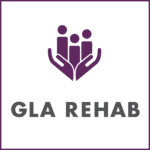Frequently, the clients we work with at GLA are unable to return to their pre-accident employment due to physical, cognitive, and/or emotional impairments. While clients often express a desire to return to the workforce, they struggle with their limited ability to identify their transferable skills and are therefore unable to independently plan new careers that they would both enjoy and be able to successfully complete.
The Career Occupational Preference System (COPS) allows clients and their therapists to begin career exploration in a meaningful way. The assessment is comprised of three separate subtests which measures an individuals’ occupational interests, abilities, and work values.
These subtests include the following:
- Career Ability Placement Survey (CAPS): This is a series of standardized tests, which measure an individual’s abilities across eight categories, including Mechanical Reasoning, Spatial Relations, Verbal Reasoning, Numerical Ability, Language Usage, Word Knowledge, Perceptual Speed and Accuracy, Manual Speed and Dexterity.
- The Career Occupational Preference System Interest Inventory (COPS): This is a self-completed inventory consisting of 168 items examining a person’s level of interest in specific job duties or roles. On each question the client is asked to rank their interest on a four point scale from “Like Very Much” to “Dislike Very Much”.
- The Career Orientation Placement and Evaluation Survey (COPES): This is a self-completed inventory consisting of 128 items examining the values a person finds important in a job. With each item the client answers the question “I value activities or jobs in which I…” and then is provided with two options that finish the sentence. For example, “work with ideas” vs “work with my hands”.
The client’s scores in each assessment are totalled and then cross referenced against fourteen “Career Clusters.” The results of each assessment reveal correlations between their current abilities, interests, and values compared to those associated with jobs within each career cluster.
Some example of Career Clusters include:
- Business, Professional or Skilled
- Communication
- Science, Professional or Skilled
- Clerical
- Technology, Professional or Skilled
- Arts, Professional or Skilled
- Outdoor
Occupational Therapists can use this information to help the client identify meaningful occupations, related courses of study, as well as skills and abilities required to perform the jobs within their identified career cluster or clusters.
The OTs at GLA utilize this assessment as part of the larger Readiness to Return to Work assessment. This would be the first phase in implementing the client’s vocational re-training program and assisting with their goal of returning to competitive employment.
Written by:
Scott Wooder, MSc. OT, Registered Occupational Therapist


